Intel Xeon Platinum 8458P to Intel Xeon Max 9468 Performance
Here, we will use the Intel Xeon Max with its 64GB of onboard HBM2e memory and vary our SNC. We have DDR5 in the Xeon Platinum. The maximum core count for both parts is 48 for the Xeon Max 9468 and 44 cores for the Xeon Platinum 8458P. Things are always a bit odd comparing the HBM parts since the 350W from the Xeon Max includes the HBM2e memory, but the DDR5 for the Xeon Platinum is not included in the 350W so the Xeon Platinum runs at higher clock speeds. Still, it was hard to get matching parts at the same core counts and clock speeds due to the power being used by the HBM2e memory on Xeon Max.
For NAMD, the Xeon Max was, as we would expect, faster with SNC=4.
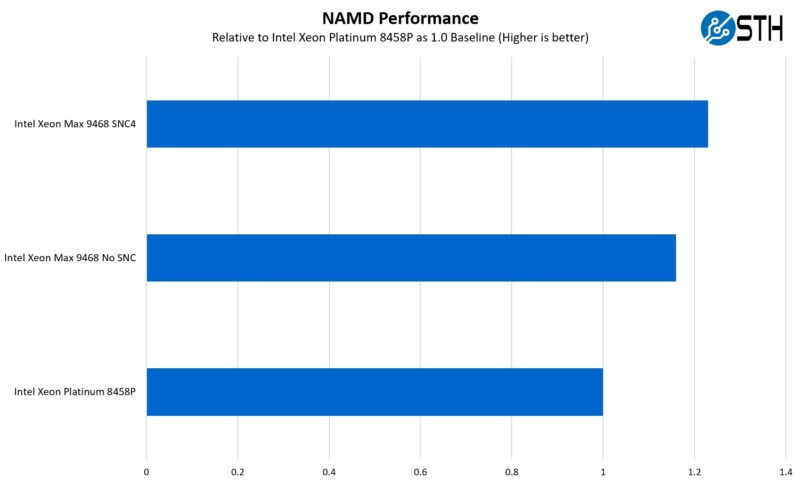
Our OpenFOAM testing saw a similar trend.
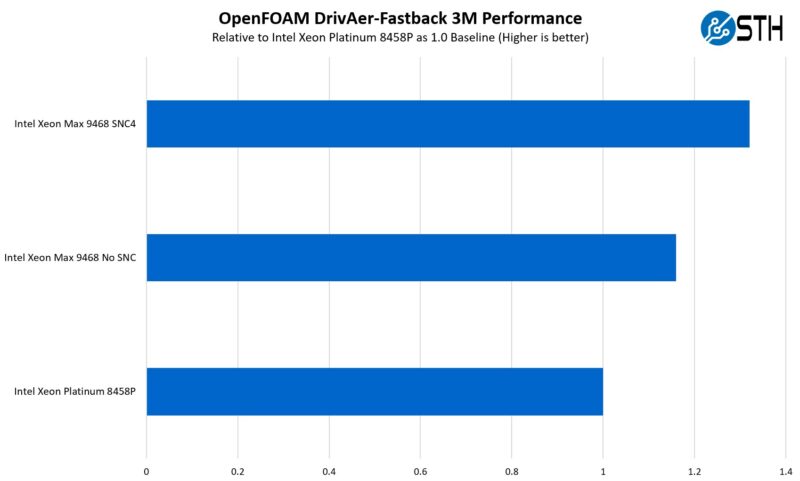
These are really showing the benefit to the Xeon Max’s HBM2e memory.
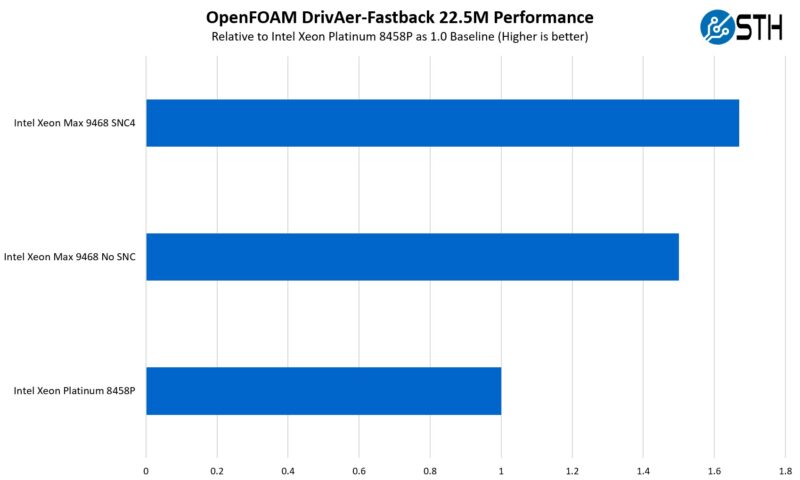
On the materials modeling side, we see similar results again.
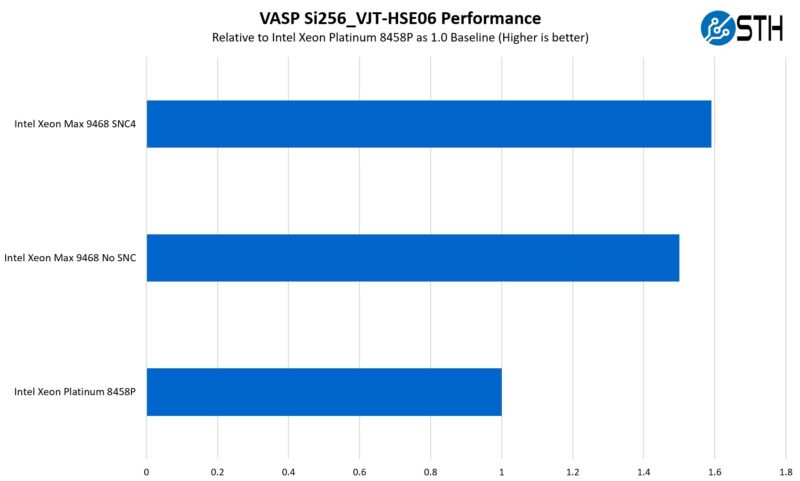
We did find one case where the SNC=4 was not advantageous, though.
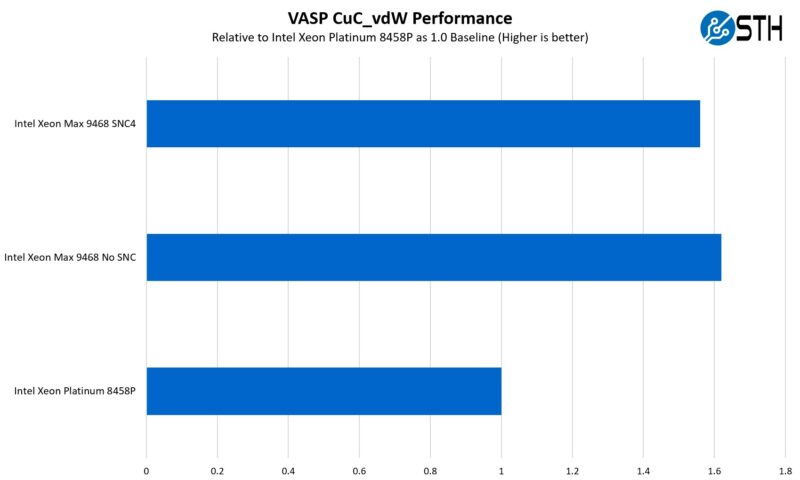
Of course, if you want to learn more about Xeon Max, check out our in-depth piece. We are looking at HPC here, but there are other workloads that matter to folks. The QoolRack is seeing its first customers in the HPC space, so that is why we used the Xeon Max.
The real question is the power consumption impact.
QCT QoolRack Power Consumption Impact
We started with a rack with a bunch of air-cooled systems, and we were getting just shy of 12kW of total power consumption, of which the rack was using around a quarter of that for cooling.

Pulling the data off the QoolRack, the remaining fans were running at a lower load and the rear door heat exchanger fans were not even running at their highest speeds because the solution is designed for much higher power consumption in a rack.

Here we can see around 10% power savings. That is good, but the other side is that the CDU and rear door heat exchanger had more capacity for cooling, so one can allegedly do better with larger configurations. That is why we tend to see liquid cooling in dense clusters.
Final Words
Liquid cooling is a big deal. With the surge of AI in the market and the next generation of new higher-power chips, 2024 will see rapid adoption of liquid cooling for high-end computing. For now, we wanted to show off what QCT is doing on the liquid cooling side since they are a larger vendor of cloud and AI systems.
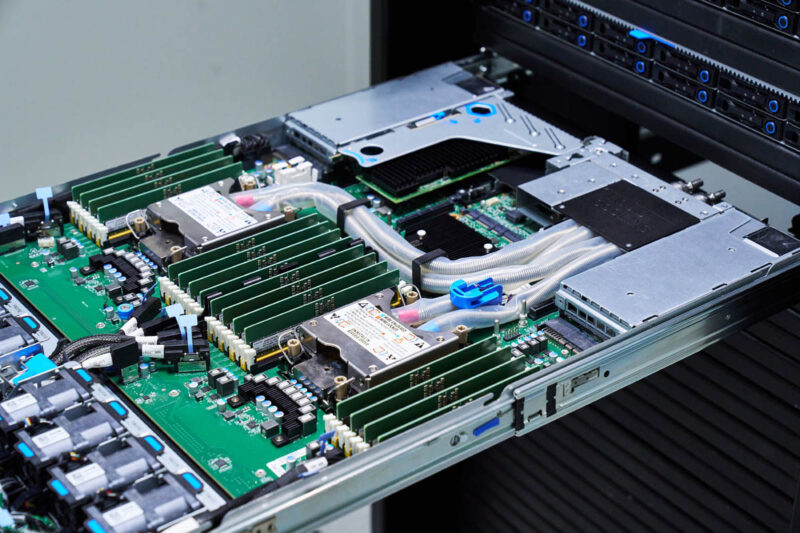
Hopefully, this was a fun look at the QCT QoolRack solution for folks as we head into SC23 season.




Now show us the GPU version